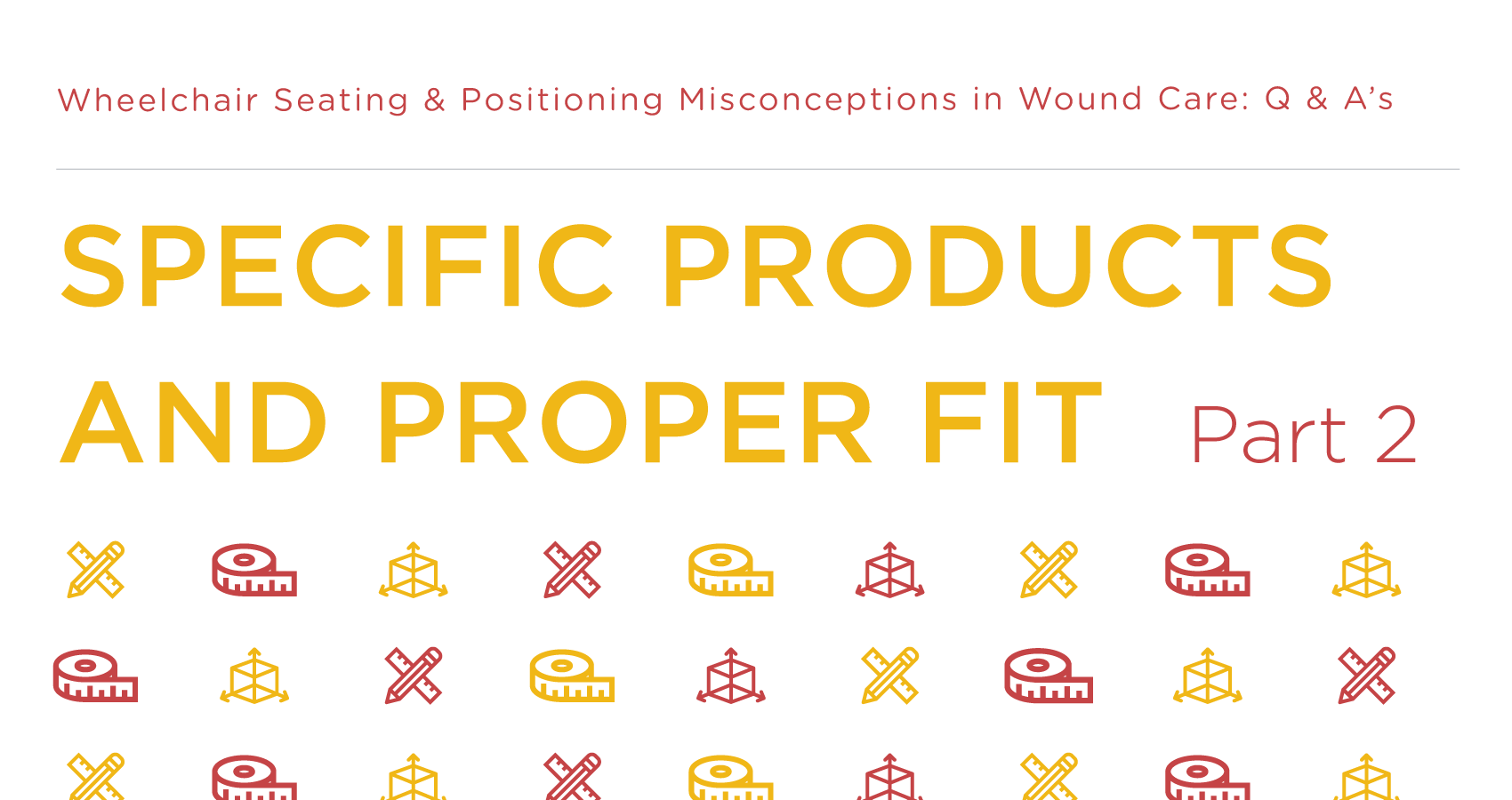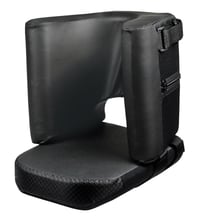Part 4 in our series Wheelchair Seating and Positioning Misconceptions in Wound Care: Q & A's where Lindsey Sharpe PT, DPT answers questions asked by participants of the webinar by the same name. This week we're focusing on questions about specific products and proper fit. See Part 1, Part 2, and Part 3.
12. When are foot “boxes” desired/useful?
When you say “foot boxes”, this can be a very general term! In this section is a complete list of LE supports that can be mounted onto any wheelchair, but what I think you are referring to is the single/double foot support. The single/double foot support would be utilized for someone who possibly has contractures and is unable to be positioned on a standard footplate, someone who is having issues with the LE falling off the footplate, or someone with skin issues on the feet, i.e. diabetic foot ulcers and unable to wear protective shoes or needs offloading on the heels. Both our single and double foot supports have a heel cut-out to eliminate pressure on the heel.
If someone is having issues on only one side, you can order a single foot support; also, some clients/therapists prefer to use two separate single foot supports even if there are issues on both feet, as it allows swinging away the leg rests for transfers. The double foot support is for clients who have bilateral issues and who do not need the leg rests to swing away (ie. Lift transfers). The double foot support with the separator would assist in maintaining LE alignment in the chair i.e. preventing ADDuction and IR at the hips/knees to support a more neutral posture and prevent the development of/progression of postural abnormalities. The single and double foot supports can also be used to minimize tone, in some cases, depending on what triggers your client’s tone.
Types of LE Support:
|
|
|
|
Single Foot Support |
Double Foot Support With Separator/ Double Foot Support |
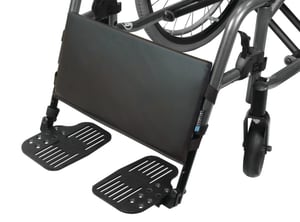 |
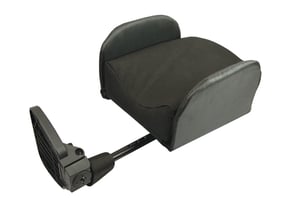 |
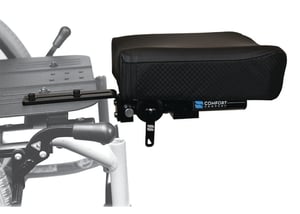 |
|
Calf Pads/Calf Protector |
External Fixator Support |
Amputee Support |
13. The presentation demonstrated varieties of WCs for patients under 300 lbs. What options are available for bariatric members or tall members as the majority of standard WCs do not accommodate our taller patients?
Great question! Bariatric equipment has its own codes associated; let me provide some examples of what would be the equivalent of the K0004 WC in a bariatric version.
NOTE: ALL bariatric chairs are going to be much heavier as they must be more durable to withstand to the increased weight capacity. So, these chairs are much more difficult to propel.
If your bariatric client is unable to functionally propel and be independent in a bariatric manual wheelchair, this is a scenario where sometimes, it is appropriate to bump up to heavy-duty (this is the term for bariatric power chair bases) power chair bases to allow functional independence. Also, often our bariatric clients have heart conditions/respiratory conditions, and I have found that if this is the case, their HRs increase to an unsafe level/O2 stats decrease to an unsafe level when attempting to propel a bariatric manual WC. Again, this is a scenario where it is appropriate to consider a heavy-duty power chair for safety and independence.
The two bariatric manual WC codes are:
K0006: Heavy duty WC
These are typically up to 300-350 pound weight capacity, depending on the manufacturer.
K0007: Extra heavy-duty WC
These are typically 35-450 weight capacity, depending on the manufacturer.
If you would like specific recommendations for a quality heavy-duty or extra heavy-duty Wheelchair for a specific client, please email us at: education@comfortcompany.com
14. Would you recommend the K0004 for pt who has BLE contractions?
Yes! The goal in wheelchair positioning is always to maximize pressure redistribution and a wheelchair that has adjustability (minimum K0004) can allow this. In addition to an adjustable wheelchair, a patient with LE contractures may need an adjustable cushion. Consider a patient with a hip flexion contracture who is not making any femoral contact with the cushion. Building up the cushion on that side to increase contact will optimize pressure redistribution. Another consideration with LE contractures is LE supports. Let’s look at lower extremity supports in general.
LE supports can be added to a chair to:
- support the lower leg, foot, and ankle in optimal
position
- decrease risk of contracture
- accommodate for contractures and protect from injury
- manage abnormal tone and reflexes
- support an amputated limb
- support a limb post-surgery on leg rests
- pair with an external fixator support, providing great stability and support for a LE post hip/knee surgery, or when a LE immobilizer is in use
TYPES OF LE SUPPORTS: (see the first question and answer in this post)
Single Foot Support
Double Foot Support
Double Foot Support with Separator
Calf Pads
External Fixator Support
Amputee Support
You have all of these options as well as noting that this MAY be a scenario where elevating AND articulating leg rests could be appropriate. See Question 10 for an answer regarding this topic.
Next week we'll look at the last part in our series: wheelchair configuration questions.

Lindsey Sharpe, PT, DPT
Lindsey Sharpe graduated with a BA in Exercise and Sport Science from the University of North Carolina at Chapel Hill in 2007 and with her Doctor of Physical Therapy from Elon University in 2010. Lindsey was a practicing clinician for seven years primarily focusing on neurological conditions and wheelchair seating and positioning.
Lindsey was first introduced to wheelchair seating and positioning during her time on the spinal cord injury team at the University of Virginia's acute rehab hospital where she discovered her interest in and passion for this niche in the therapy world. Lindsey went on to open a brand-new seating clinic with Carolinas Healthcare System in Concord, NC where she advanced her knowledge and skills performing both inpatient and outpatient seating evaluations for clients of all ages having a variety of diagnoses.
Icon in the title image made by Freepik from www.flaticon.com
